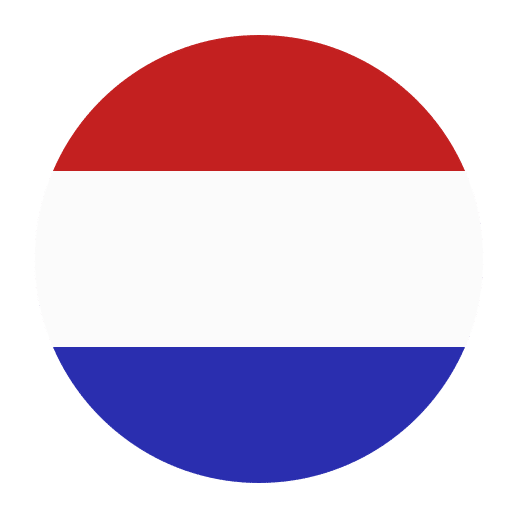In the ever-evolving world of language learning, Dutch is gaining popularity among many English speakers. The language, spoken by over 23 million people primarily in the Netherlands and Belgium, offers a rich tapestry of cultural and historical insights. With advancements in technology, learning Dutch has become more accessible and enjoyable than ever before. Interactive online platforms have revolutionized the way we approach language acquisition, providing immersive and engaging experiences that cater to various learning styles. This article delves into the benefits and features of these platforms, offering a comprehensive guide for English speakers embarking on their Dutch language journey.
Why Learn Dutch?
Before diving into the specifics of online platforms, it’s worth exploring the reasons behind learning Dutch. The Netherlands and Belgium are not only known for their picturesque landscapes and vibrant cities, but also for their significant contributions to art, science, and commerce. Mastering Dutch can open doors to:
1. **Career Opportunities:** The Netherlands is home to many multinational companies. Proficiency in Dutch can enhance your employability in various sectors, including finance, technology, and logistics.
2. **Travel and Cultural Experience:** Knowing Dutch can enrich your travel experience, allowing you to connect with locals and understand cultural nuances better.
3. **Educational Pursuits:** The Netherlands boasts some of the world’s top universities. Learning Dutch can be advantageous if you’re considering higher education in the country.
4. **Cognitive Benefits:** Learning a new language enhances cognitive abilities, improves memory, and increases problem-solving skills.
Features of Interactive Online Platforms
Interactive online platforms have revolutionized language learning by offering a variety of tools and features that cater to different learning styles. Here are some key features that make these platforms effective:
1. Gamification
Gamification involves incorporating game elements into learning activities to make the process more engaging and enjoyable. Platforms like Duolingo and Memrise use gamification to motivate learners through points, badges, and leaderboards. This approach not only makes learning fun but also encourages consistent practice.
2. Adaptive Learning
Adaptive learning technology personalizes the learning experience based on the learner’s progress and performance. Platforms like Rosetta Stone and Babbel use algorithms to tailor lessons to individual needs, ensuring that learners receive the right level of challenge and support.
3. Interactive Exercises
Interactive exercises, such as drag-and-drop activities, matching games, and fill-in-the-blank tasks, help reinforce vocabulary and grammar concepts. These exercises provide immediate feedback, allowing learners to correct mistakes and reinforce their understanding.
4. Multimedia Resources
Many platforms offer a variety of multimedia resources, including audio clips, videos, and images, to enhance the learning experience. These resources provide context and help learners develop listening and comprehension skills. For instance, FluentU uses real-world videos, such as news clips and movie trailers, to teach Dutch.
5. Community and Social Features
Learning a language is often more effective when done in a social context. Platforms like HelloTalk and Tandem connect learners with native speakers for language exchange. These social features allow learners to practice speaking and writing in Dutch while receiving feedback from native speakers.
6. Progress Tracking
Tracking progress is essential for maintaining motivation and setting goals. Most interactive platforms offer progress tracking features, such as completion percentages, streaks, and performance analytics. These tools help learners stay on track and measure their improvement over time.
Top Interactive Online Platforms for Learning Dutch
Now that we’ve explored the features of interactive online platforms, let’s take a closer look at some of the top platforms for learning Dutch.
1. Duolingo
Duolingo is one of the most popular language learning platforms, known for its gamified approach. The platform offers bite-sized lessons that cover vocabulary, grammar, and pronunciation. Duolingo’s interactive exercises, such as matching words with images and translating sentences, keep learners engaged. The platform also has a mobile app, making it convenient for learning on the go.
Pros:
– Free to use with optional in-app purchases
– Gamified experience with points and badges
– Mobile app for learning anytime, anywhere
Cons:
– Limited depth in grammar explanations
– May require additional resources for advanced learning
2. Babbel
Babbel focuses on practical language skills, offering courses designed by language experts. The platform emphasizes real-life conversations and cultural context. Babbel’s interactive exercises and speech recognition technology help learners practice pronunciation and speaking skills. The platform also offers personalized review sessions based on the learner’s progress.
Pros:
– Focus on practical language use and cultural context
– Speech recognition technology for pronunciation practice
– Personalized review sessions
Cons:
– Requires a subscription for full access
– Limited to beginner and intermediate levels
3. Rosetta Stone
Rosetta Stone is a well-established language learning platform known for its immersive approach. The platform uses a method called Dynamic Immersion, which involves teaching through context and images rather than translations. Rosetta Stone’s interactive exercises and speech recognition technology help learners develop listening, speaking, reading, and writing skills.
Pros:
– Immersive learning method with no translations
– Speech recognition technology for pronunciation practice
– Comprehensive curriculum covering all language skills
Cons:
– Requires a subscription for full access
– May be challenging for complete beginners without prior language learning experience
4. Memrise
Memrise combines gamification with spaced repetition to help learners retain vocabulary and grammar. The platform offers interactive courses created by both language experts and the community. Memrise’s use of multimedia, such as videos of native speakers, provides context and enhances listening skills. The platform also has a mobile app for convenient learning.
Pros:
– Gamified experience with points and levels
– Spaced repetition for effective memorization
– Multimedia resources for context and listening practice
Cons:
– Limited depth in grammar explanations
– Community-created courses may vary in quality
5. FluentU
FluentU uses real-world videos, such as news clips, music videos, and movie trailers, to teach Dutch. The platform’s interactive subtitles and quizzes help learners understand and retain new vocabulary and grammar. FluentU’s use of authentic content provides cultural context and enhances listening and comprehension skills.
Pros:
– Real-world videos for authentic language practice
– Interactive subtitles and quizzes for reinforcement
– Cultural context through multimedia content
Cons:
– Requires a subscription for full access
– May be challenging for complete beginners
6. HelloTalk
HelloTalk is a language exchange platform that connects learners with native speakers for real-life conversations. The platform offers text, voice, and video chat features, allowing learners to practice speaking and writing in Dutch. HelloTalk’s built-in translation and correction tools help learners communicate effectively and receive feedback from native speakers.
Pros:
– Real-life conversations with native speakers
– Text, voice, and video chat features
– Translation and correction tools for effective communication
Cons:
– Requires a subscription for full access to some features
– May require proactive effort to find and maintain language exchange partners
Tips for Maximizing Your Learning Experience
While interactive online platforms offer a wealth of resources and tools, it’s essential to approach your language learning journey strategically. Here are some tips to help you make the most of these platforms:
1. Set Clear Goals
Setting clear and achievable goals can help you stay motivated and focused. Whether it’s mastering a specific set of vocabulary, completing a certain number of lessons per week, or being able to hold a basic conversation, having a goal in mind will guide your learning process.
2. Practice Consistently
Consistency is key to language learning. Try to dedicate a specific amount of time each day or week to practicing Dutch. Regular practice helps reinforce what you’ve learned and prevents you from forgetting important concepts.
3. Engage with Native Speakers
Interacting with native speakers is one of the most effective ways to improve your language skills. Platforms like HelloTalk and Tandem can connect you with Dutch speakers for language exchange. Additionally, participating in Dutch-speaking communities or online forums can provide valuable practice and exposure.
4. Supplement with Additional Resources
While interactive platforms offer a comprehensive learning experience, supplementing your studies with additional resources can provide a more well-rounded approach. Consider using textbooks, watching Dutch movies or TV shows, listening to Dutch music or podcasts, and reading Dutch books or articles.
5. Embrace Mistakes
Making mistakes is a natural part of the language learning process. Don’t be afraid to make errors, as they provide valuable learning opportunities. Use the feedback from interactive exercises and native speakers to improve and refine your skills.
6. Stay Motivated
Language learning can be a long and challenging journey, so it’s important to stay motivated. Celebrate your progress, no matter how small, and remind yourself of the reasons why you started learning Dutch. Joining a study group or finding a language learning buddy can also provide mutual support and encouragement.
Conclusion
Learning Dutch through interactive online platforms offers a dynamic and engaging way to master the language. With features like gamification, adaptive learning, interactive exercises, multimedia resources, and social connections, these platforms cater to various learning styles and preferences. By setting clear goals, practicing consistently, engaging with native speakers, supplementing with additional resources, embracing mistakes, and staying motivated, you can make significant progress on your Dutch language journey.
Remember, language learning is not just about acquiring new words and grammar rules; it’s about immersing yourself in a new culture, broadening your horizons, and connecting with people from different backgrounds. Embrace the process, enjoy the experience, and before you know it, you’ll be conversing confidently in Dutch. Veel succes! (Good luck!)

